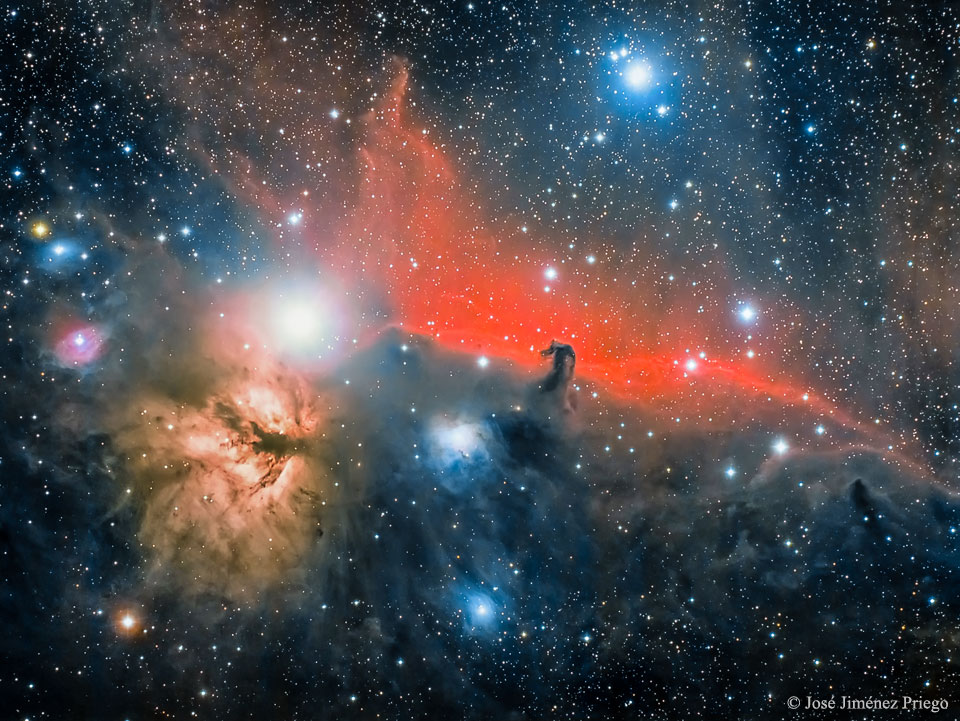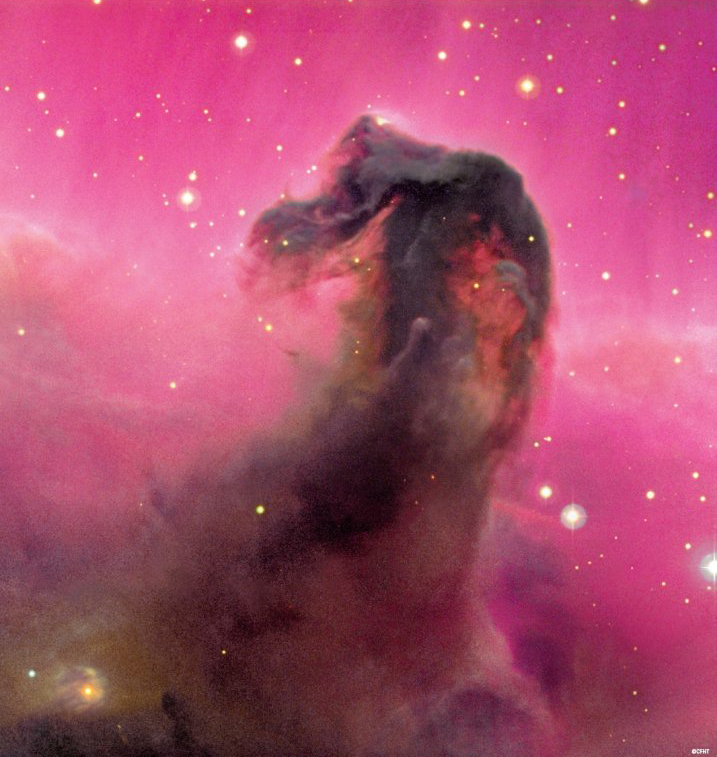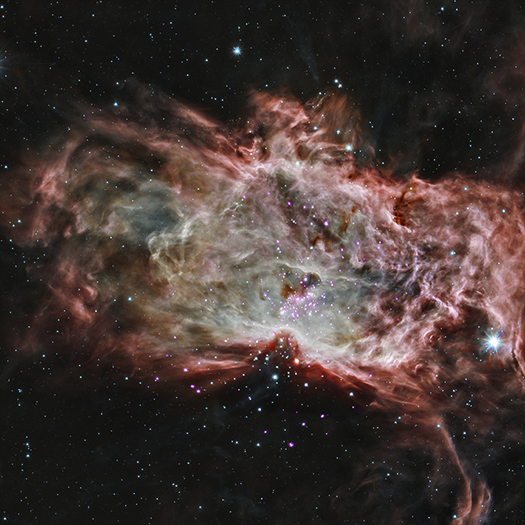The Horsehead region. Photo: José Jiménez Priego
The subject matter of today's APOD is something all astronomy nerds have seen before. But why not show it again on a Sunday, which is the repeat day anyway?
Today's APOD is not the best picture I've seen of this part of the sky, but I'm going to guess that José Jiménez Priego is an amateur with limited equipment, in which case his picture is very nice indeed. As a color commentator, I applaud his colors. The reds are red, the blues are blue, the yellows are yellow and the pinks are pink. What more can you ask for?
The Horsehead Nebula. Canada-France- Hawaii Telescope.
Let's look at some of the constituent parts of this iconic skyscape, and let's start with the Horsehead Nebula itself! As you can see from the picture at right, the Horsehead is a fluffy, tenuous, evaporating dust pillar. In the picture at right, you can just make out a star being born at the top of "the head of the horse", and you can see a faint bright outline along the "head". So the Horsehead Nebula is giving birth to a starat the same time as it is evaporating.
The star responsible for carving out the dust pillar that is the Horsehead Nebula is
Sigma Orionis, an O-type, multiple star system slightly similar to
the Trapezium (in a picture by Theofanis Matsopoulos) in the Orion Nebula. The large Hα nebula surrounding Sigma Orionis is one of the reddest parts of the entire Orion constellation, and this Hα nebula is the backdrop against which we are seeing the Horsehead Nebula. You can see another picture of the full extent of the Sigma Orionis Hα nebula
here, in a picture by Rogelio Bernal Andreo.
The Flame Nebula in infrared light and X-rays.
Photo: Chandra Space Telescope and Spitzer Space Telescope.
The next nebula we should take a closer look at is the large yellow Flame Nebula. My guess is that the yellow color is caused by dust reddening of the blue stars being born inside. As you can see in the picture at right, a cluster of stars is being born inside, hid from optical view by a thick dust lane in front of it.
Note the structural similarity between the Flame Nebula and the star forming region
S106, in a picture by NASA, ESA, and the Hubble Heritage Team (STScI/AURA).
The Horsehead Nebula and reflection nebula NGC 2023.
Photo: Ken Crawford.
Finally, take a look at the picture at left of the Horsehead Nebula and the blue reflection nebula at the "foot" of it. NGC 2023 is lit up by the blue light of a B-type star being born inside it.
Ann
 The Horsehead Nebula
The Horsehead Nebula




